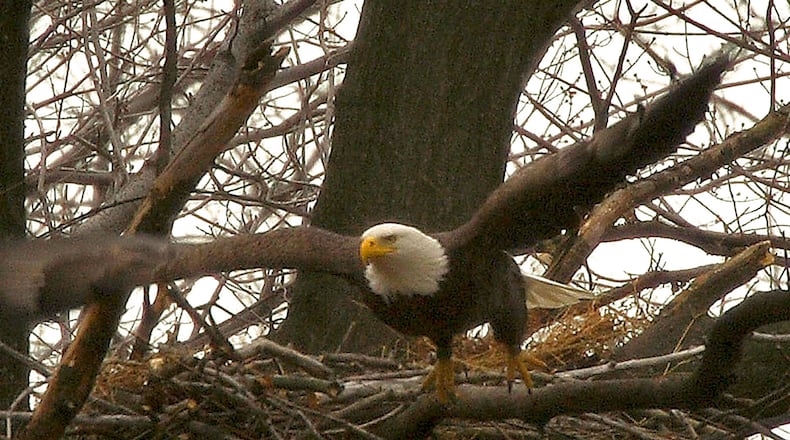This is the best time of year to see bald eagles in Georgia. The majestic, charismatic birds kicked off their nesting season this month and are super busy now shoring up old nests and building new ones.
Eagle pairs, which mate for life, tend to return to old nests year after year before finally building a new one near their old nest.
The nests — made of large sticks and branches and lined with moss, grass, plant stalks and other material — huge, generally 5 to 6 feet in diameter and 3 to 4 feet deep. More than 90% are built in tall, living pines just below the upper canopy.
Usually nests are near inland reservoirs, rivers, farm ponds and marshes or along the coast — not surprising since eagles’ favorite prey are fish and waterfowl.
This season’s nest building may be busier than usual because of wind damage to some nests from Hurricane Helene, which swept across central Georgia in late September. Biologists are still assessing the extent of possible damage.
Annual surveys conducted from helicopters this spring by the Georgia Department of Natural Resources found bald eagle nesting success above average in most areas of the state — good news after illness decimated the population two years ago. In the northern half of the state alone, this year’s survey identified 145 nest territories. Of those, 116 produced 178 eaglets.
With its nesting season beginning in October, the bald eagle is Georgia’s earliest nesting bird. Some nests may have eggs by November and hatchlings by Christmas Day. Each nest produces an average of two eggs. One reason for the early nesting is that baby eagles need a long time to develop: From the time an egg is laid until the time the eaglet fledges is about four months. After that, a young eagle needs more time to develop hunting and flying skills.
Because of their increasing numbers, bald eagles were removed from the federal Endangered Species List in 2007. However, they are still protected by state law and two federal laws, the Bald and Golden Eagle Protection Act and the Migratory Bird Treaty Act. In compliance with federal guidelines, stay at least 330 feet away from active eagle nests.
IN THE SKY: From David Dundee, Tellus Science Museum astronomer: The moon will be new on Friday. Venus is low in the west at dusk. In the east are Mars, just before midnight; Jupiter and Saturn, just after dark.
Charles Seabrook can be reached at charles.seabrook@yahoo.com.
About the Author
Keep Reading
The Latest
Featured


